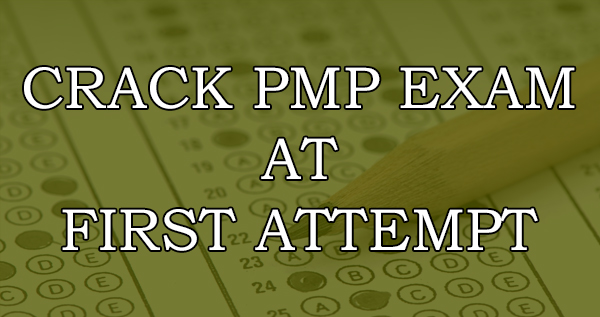For completing a projected before the deadline and within the given budget and conditions, one has to take the help of the project management plan. A project management plan is an extensive process and comprises of many parts as well.
One of the key aspects of any project that can determine the overall success and outcomes of your project is how well you manage the resources that are required to complete it. However, for that, you will have to procure the resources from various vendors who sell the required services and goods.
The procurement management plan is prepared for the same reason. It helps you to ensure a continuous supply of services and goods without any delay or interruption by managing the relationships with different kinds of vendors and service providers.
In short, a procurement management plan involves the complete process that has to be followed to procure all the resources required for a given project.
Thorough planning is required to determine the resources that you will find within your organization and the resources that you will have to outsource from outside. You will also have to maintain a cordial relationship with many contractors to ensure a smooth supply of the required goods.
This is how you can procure the resources from the contractors and vendors:
Bidding & Entering Contracts
Firstly, you will have to make a list of the external resources that are required for a project. After that, you can start a bidding process to acquire them. This is where multiple contractors will bid to provide the required resources.
After getting a sufficient number of bids you can evaluate all of them to finalize the best bids for your project. Once you have finalized the bids for all the resources, you will have to enter into a separate contract with each of the contractors.
It is necessary to mention the nature of the contract, schedule, budget, and other aspects so that the contractors fulfill your requirements on time. Once you have procured all the resources, you must also close these contracts properly. This will help you to understand whether all the resources have been delivered as per the contract or not.
However, the procurement of resources is not so easy as mentioned above. The list of the resources can be endless and extensive projects need strong procurement strategies. This is where a procurement management plan helps you. A procurement management plan usually comprises of these stages or steps:
Step 1: Defining requirements
• Before procuring the resources, a project manager will have to list down all the requirements first. This list must include the quantity, specifications, quality, and time-slot during which you need each of the resources.
• This will also help him to determine the contribution of each resource in the project i.e. why are they needed and at what stage of the project he will require them.
• Once he defines all the requirements and their purposes, he will have to assign different purchases to different team members as one person cannot make all the purchases.
• Apart from that, he will have to assign a date for all these procurement so that the resources do not get purchased twice.
Step 2: Prepare a concrete agreement
• Once a project manager has listed down all of the procurement, he will have to prepare a concrete agreement to define the rules and terms of every contract. If required, multiple agreements can be created for different resources so that everything is procured as per the terms.
• For example, he will need to mention the reimbursements and costs in the agreement to manage the procurement in a better way.
Step 3: Identification of risks & finding solutions to mitigate them
• Risks are an integral part of every project. Some of these risks lie in the procurement phase as well. A smart project manager will identify these risks in advance and create a list of them before they start causing troubles.
• Also, each risk will require a solution that has to be adopted to mitigate it. The project managers cannot mitigate all the risks by themselves and therefore, they must give that responsibility to some of their team members.
• Each team member can mitigate a few risks and a separate risk checklist can be created which carries the details like the risk type, owner of the risk, their impact on your project, and the response or how the risk was mitigated.
Step 4: Checking costs
• This is an important step in the procurement management plan as the cost of each of the procurement has to be predefined to avoid any conflicts later.
• A project manager will keep the records of all the contracts and bids along with their proposed and finalized costs. The final cost of procurement can be different than the proposed cost that was mentioned in the bid due to last moment corrections.
• Therefore, all these things have to be noted down carefully as the procurement has to be done within a set budget.
Step 5 – Determining the constraints
• Each project has several constraints that determine its outcome. Some of the most common constraints are time, cost, and scope.
• For example, if a team requires more time than the initially allotted time to complete the project, the project cost will automatically increase and it might change its scope as well. As a result, each of these constraints has to be determined to balance the remaining two.
• There are numerous constraints in a project and some of these like cost, resources, scope, etc. are closely concerned with procurement as well.
• Therefore, a project manager has to determine these constraints in advance and create a list of them as it proves to be useful in different phases of a project.
Step 6 – Reviewing bids
• After receiving the bids, a project manager will have to analyze them to select the most appropriate ones. Multiple people can be assigned the task of reviewing these bids and the response of each of the assigned persons should be recorded.
• The final decision can be taken based on these responses.
Step 7 – Contract approval
• After finalizing the bids, a project manager will have to take approvals from the concerned authorities before creating contracts for these bids.
• The concerned authorities might also provide some suggestions and inputs related to bids and contracts. After incorporating the necessary changes, contracts can be made for all the procurement and the final step will be to getting all of them approved.
Step 8 – Measuring performance of vendors
• To ensure proper supply of goods and services, all the vendors will have to be managed perfectly. A vendor management strategy or plan can be used to make sure that all the conditions of the contracts are sufficient.
• You can also create a performance metric to measure the performance of different vendors and suppliers. This will also help you to decide which suppliers and vendors among them do their job perfectly and which ones don’t.
• From this, you will know where to puts more efforts and how to improve the relationship with some vendors/suppliers for making them perform better if you are considering them for your future projects.
Conclusion
These were some steps that will help you to create a procurement management plan. We hope that you use them to create flawless and effective procurement management plans.




